Dragonflies vs. Butterflies: Two Different Beneficial Beings?
Dragonflies vs. Butterflies: Two Different Beneficial Beings?
Some insects share a similar name or function, which causes us to assume that they must be very similar creatures. Two insects in this category are the dragonfly and the butterfly. Since they both have the word “fly” in their names, and they both have mesmerizing wings that give them the power to fly where they choose, it’s often assumed that these insects are related. In actuality, dragonflies and butterflies are in completely different Orders, with butterflies in Lepidoptera and dragonflies in Odonata. This is not the only distinction between the two frequent fliers, so let’s explore the life and times of both dragonflies and butterflies.
The Circle of Life
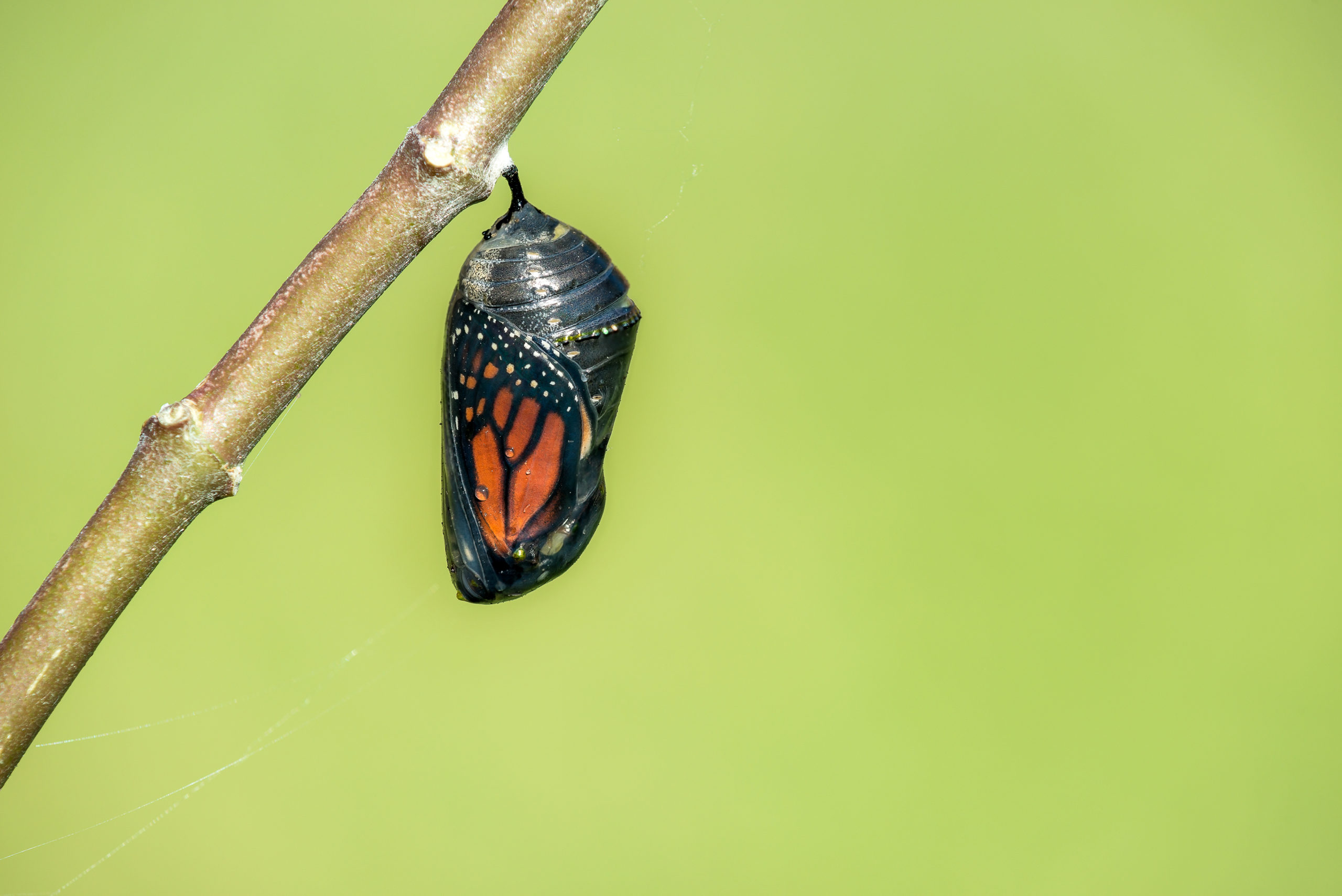
Butterfly cocoon
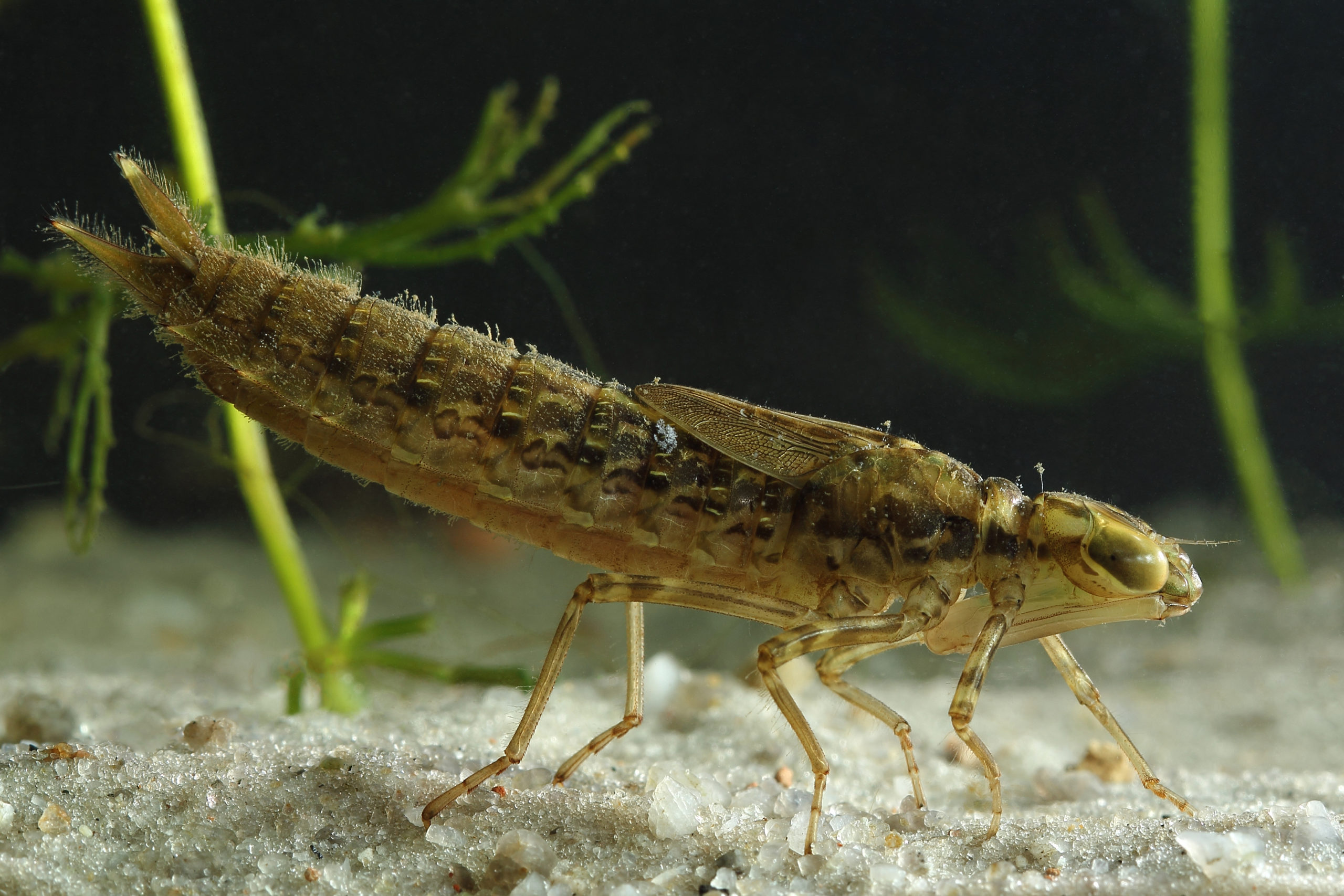
Young dragonfly
Butterflies: Butterflies have relatively short lives compared to other insects. They typically live about two to four weeks, with some species managing to survive for months. One large reason for their short lives is the abundance of their predators, including birds and rodents. Regardless, butterflies make the most of their short lives by going through their famous transition of metamorphosis. They have the typical four life stages of an insect: egg, larva, pupa, and adult. But we know the larva stage as a caterpillar, and the pupa stage as the chrysalis. After completing metamorphosis, the adult butterfly lives for a couple of weeks. They range from about half an inch to 11 inches wide with a full wingspan. The butterfly’s body is in three segments: head, thorax, and abdomen. They have tiny hairs on their bodies and their rounded wings don’t move very fast, giving them a methodical, easygoing nature. Out of the thousands of butterfly species in the world, there are only about 750 in the U.S. Interestingly enough, butterflies can perceive the ultraviolet light that we cannot, including on each other’s wings for mating purposes. Butterflies definitely make quite the positive impact on our lives in their short time, and are some of the most beautiful creatures on this planet.
Dragonflies: Conversely, dragonflies live much longer than butterflies. The larvae stage alone can last up to two years if they want. Dragonflies have a long body that ends in a tail-like section, and most varieties have a size that can be anywhere from 1 to 6 inches. They stay near the water for their entire lives because all of their life stages rely on smaller aquatic insects for food. Dragonflies are much more carnivorous than butterflies, as we will discuss later, but they don’t bite us unless we touch them and they defend themselves. They don’t like to linger in one spot for too long, especially when there isn’t any food, so they will erratically fly around until they find the prey or water they need to survive. They also have compound eyes that can see everywhere except for directly behind them, so there is not really anywhere that their prey can hide. But besides their long body and alarmingly-large eyes, the other noticeable trait of dragonflies is their thin wings that are far stronger than they seem. This is what allows them to fly faster and further than other traditional flies.
Flight Pattern
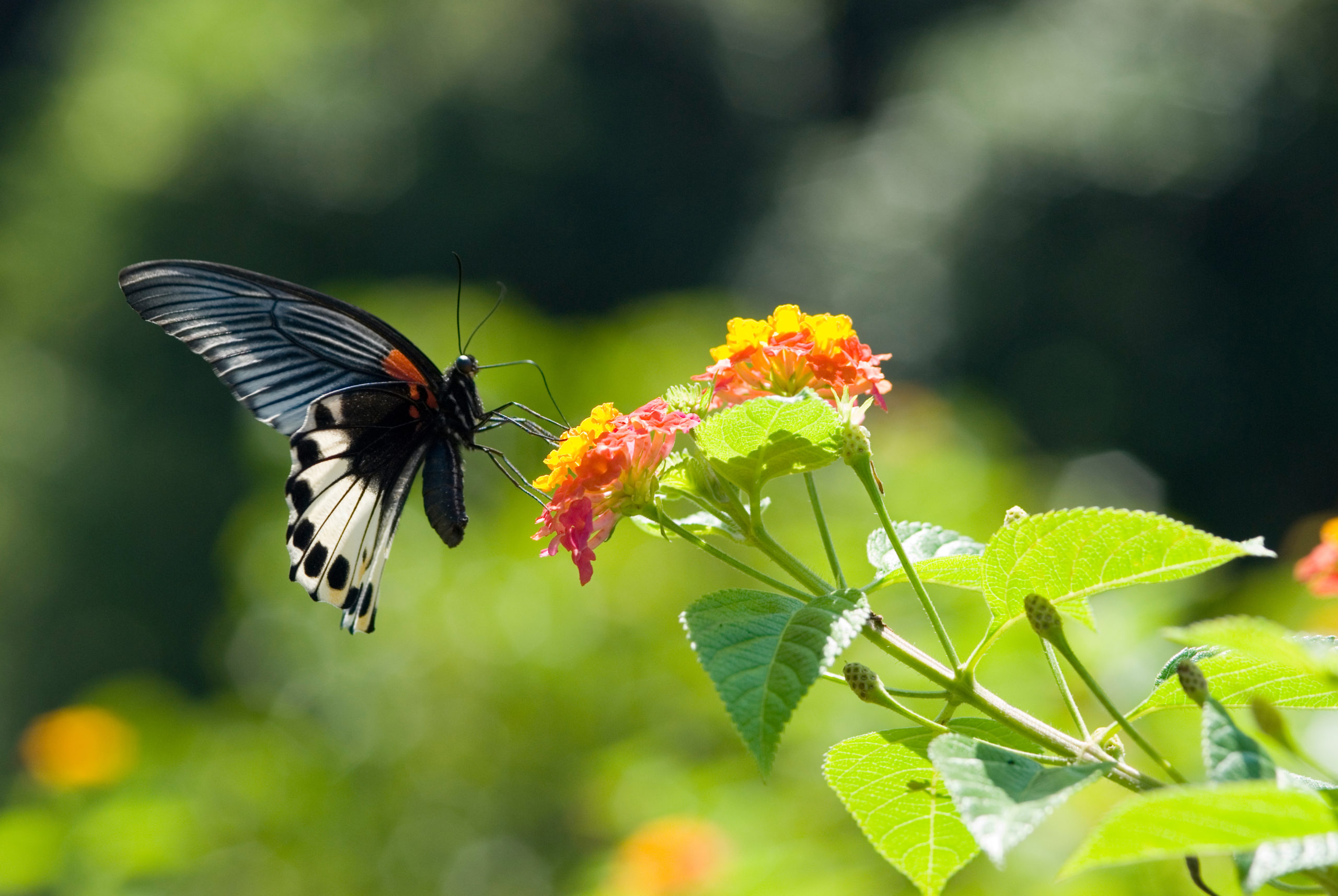
Swallowtail Butterfly
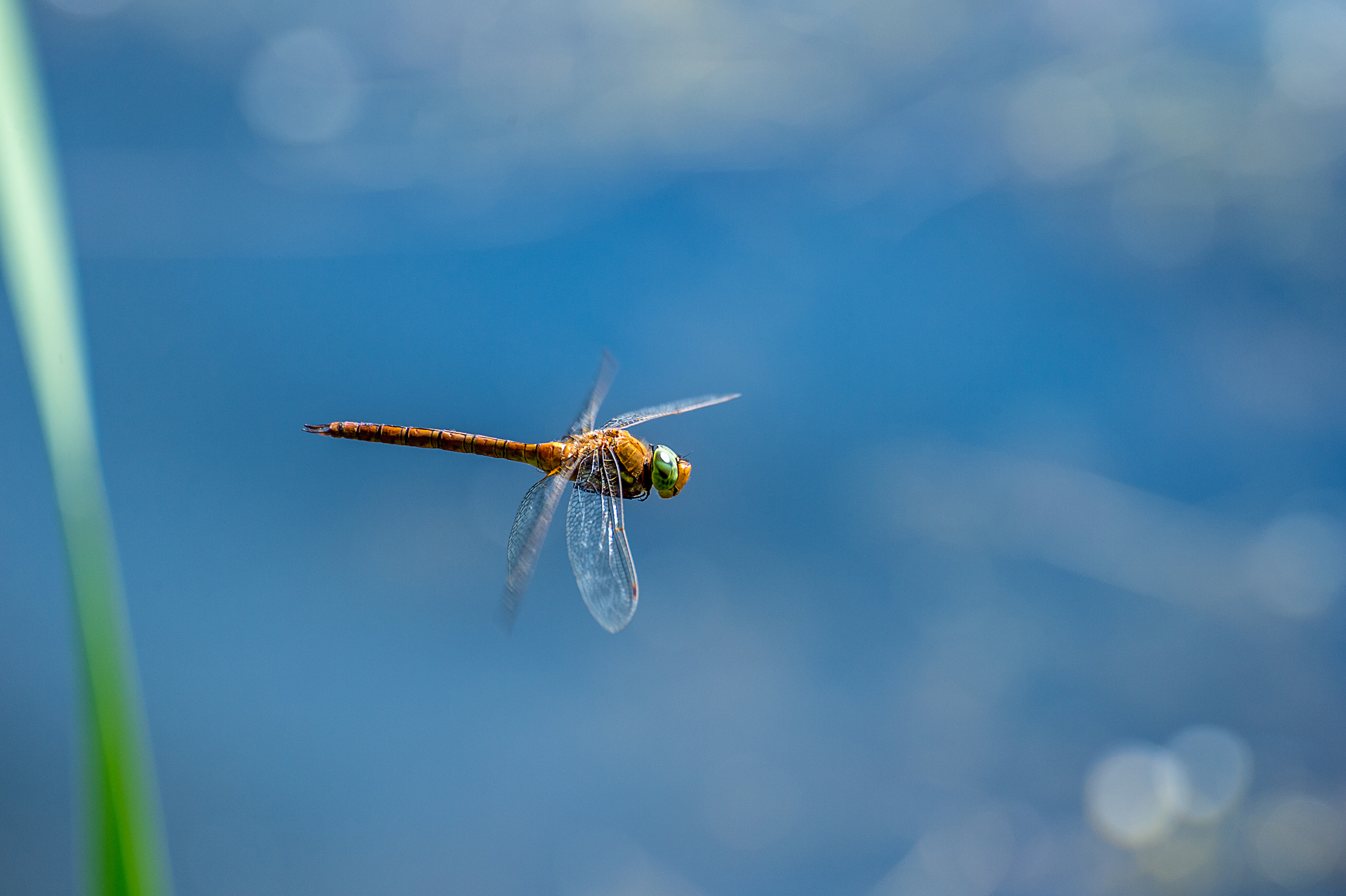
Dragonfly
Butterflies: Butterflies are known for their wings and rightfully so. Each set of wings is a beautiful work of art that is used to teach generations of children about symmetry. The wings on one side mirror the wings on the other, making for a visually-appealing and satisfying mirage. They actually have two pairs of wings, but the smaller set isn’t as noticeable as the larger one. There are two main color forms that the wings can take, and the species determines the type of form. One is the pigment color form, where the wings’ pattern is bright and opaque no matter what the lighting situation is. Think of the monarch butterfly with this one; their orange and black wings are vibrant no matter what, since those are the reflected colors in the form. The other type is structural colors, where they shift with the sunlight and look iridescent. The shimmery wings of Morpho butterflies are an example of this effect. The wings of butterflies are undoubtedly charming, but they are also effective in helping the butterfly to survive.
As mentioned earlier, butterflies are delicate fliers that flit gently from flower to flower in the gardens that they live in. They don’t fly quickly or erratically unless they’re actively trying to avoid a predator. But in most cases, butterflies would rather hide than run away. Some species can do mimicry, or look exactly like another type of butterfly. The monarch is often imitated because its wings are toxic to birds, so other species want to seem dangerous too. The patterns on their wings can be used for so many different acts, like camouflage, mating, warning, communicating, and surprising predators. These multi-talented insects have survived over the years thanks to their ingenuity and quick-thinking in the heat of danger.
Dragonflies: Dragonflies’ wings aren’t as pretty to look at as butterflies’, but they are definitely strong and useful. Dragonflies fly very fast. Like, up to 35 miles per hour fast. Their long, skinny wings are each controlled by a muscle in the thorax. These muscles can change the angle of the wing, allowing the dragonfly to swoop in wherever they see prey. This is the determining factor in where a dragonfly goes; it will alter its whole course if it sees a tasty insect nearby.
Since dragonflies only eat what they spot while flying around, they also only eat when they are flying. The gruesome process of how they catch their prey is enough to make an insect shudder, and dragonflies do it all while airborne. They can hover for over a minute, so they are in no hurry to leave the area. The dragonfly will grab its prey with its feet, then quickly tear off the prey’s wings with its muscular mandibles to paralyze and destabilize it. They dine on their catch of the day in the air as well, then zoom off to find another insect victim. This process makes us very glad that they don’t have a taste for humans!
The Feasts of Flies
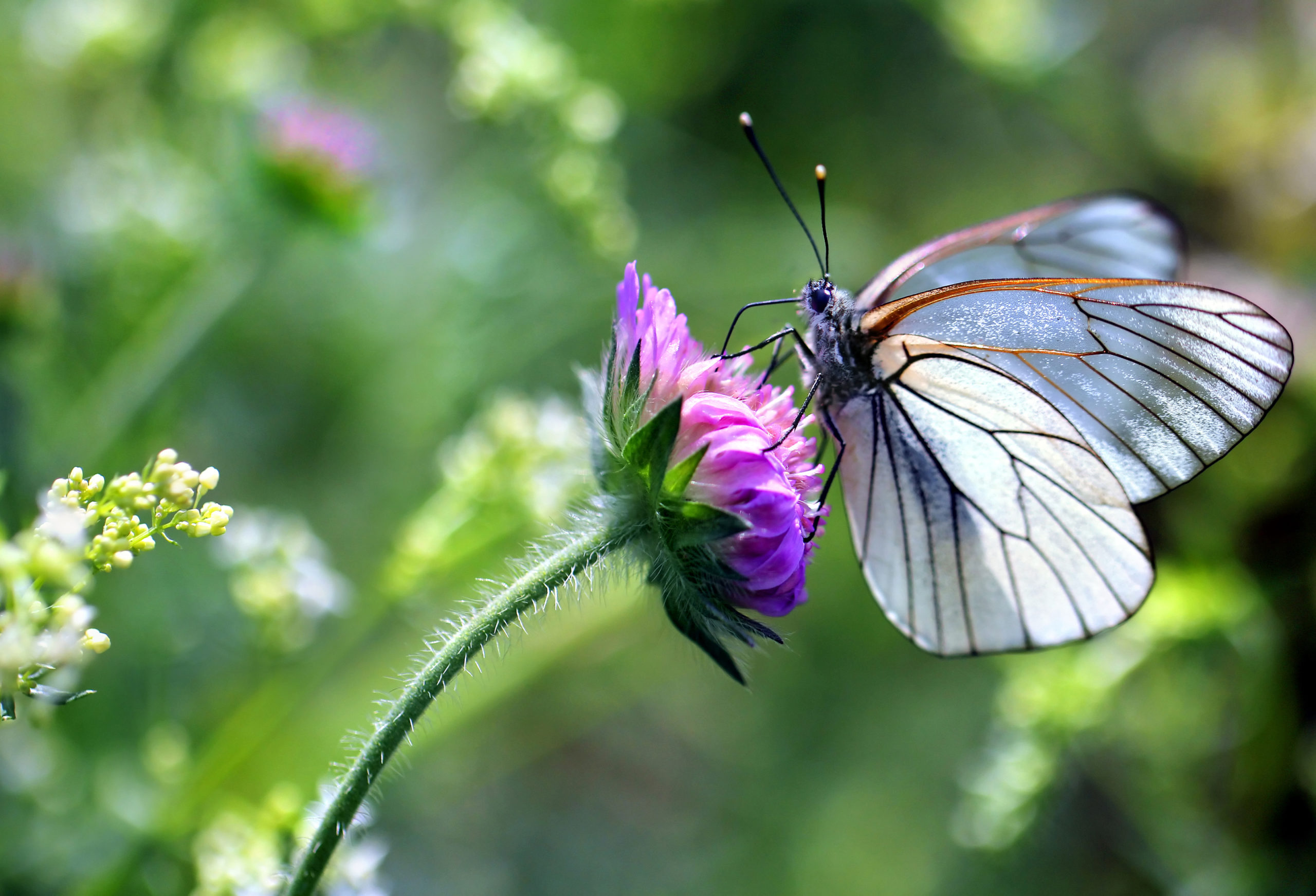
Butterfly drinking nectar
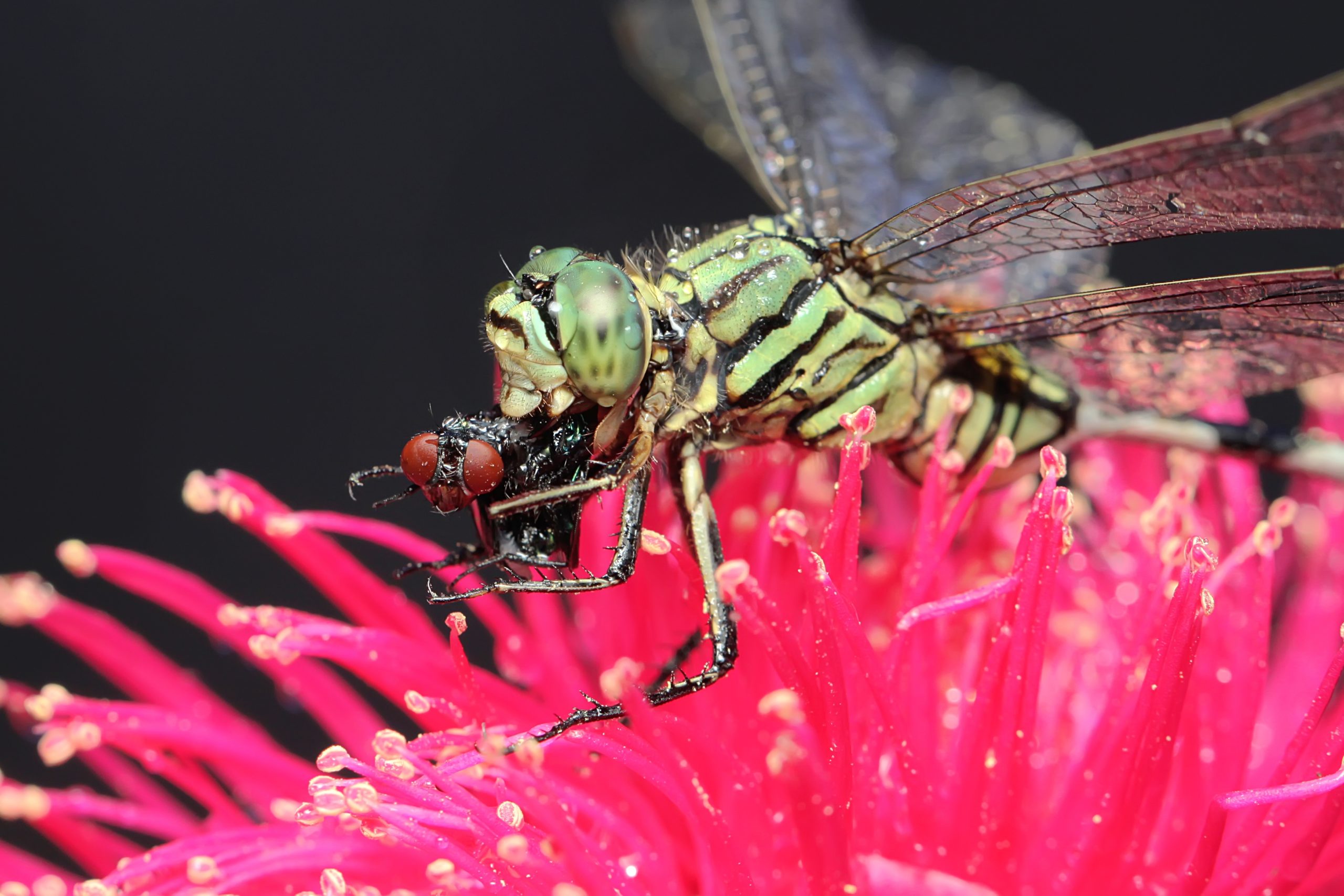
Dragonfly eating a smaller fly
Butterflies: Butterflies do eat tiny pests from time to time, but their main diet is purely organic matter. They mostly eat nectar, which is why they are always found on flowers. Their long mouth pieces allow them to get every last drop of the sweet substance. They also eat the fibers and juices from dying plants, which is helpful in breaking down the decaying plant. When butterflies don’t have nectar readily available, they will turn to aphids for their meals. This is also considerably helpful, since aphids are one of the worst and most ravenous pests to have in a garden. No matter what butterflies choose for their next course, it is helpful to both humans and the environment.
Dragonflies: Dragonflies, on the other hand, are much more insect-bloodthirsty than butterflies. They actively seek out all kinds of small pests to feast upon, mainly of the aquatic variety. This starts when they are still larvae, as the young dragonflies eat the eggs of other submerged insects and may even turn on their own if they are hungry enough. This already begins the process of helping to maintain a lower population of biting pests. Adult dragonflies still seek out pests to eat, and their favorites are mosquitoes, gnats, and cicadas. This is great for us since none of those insects are anything we want near us. And with the violent meal preparation we described earlier, it makes sense why no small insect dares to challenge the mighty dragonfly.
Beneficial Beings
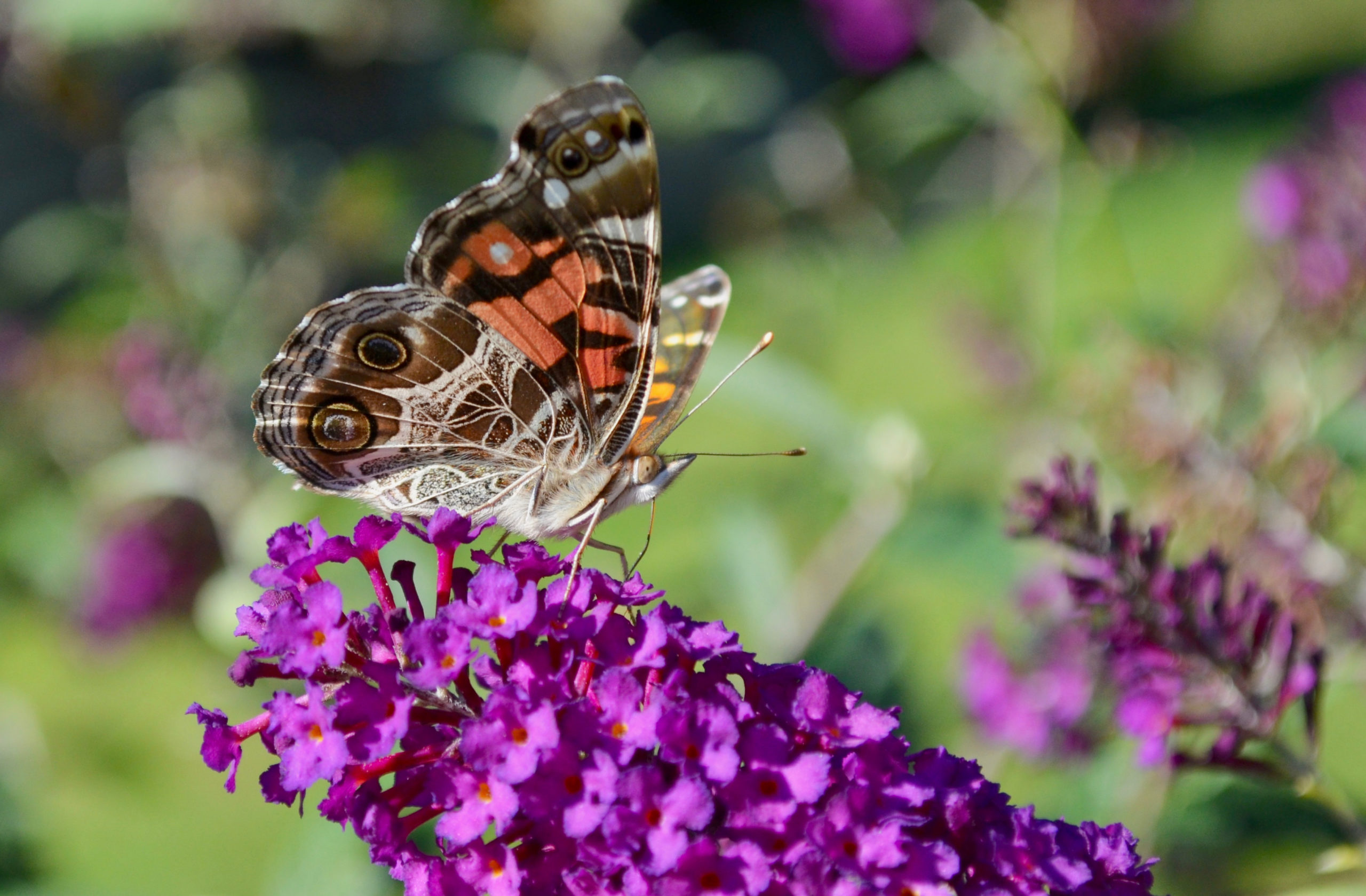
Butterfly pollinating some flowers
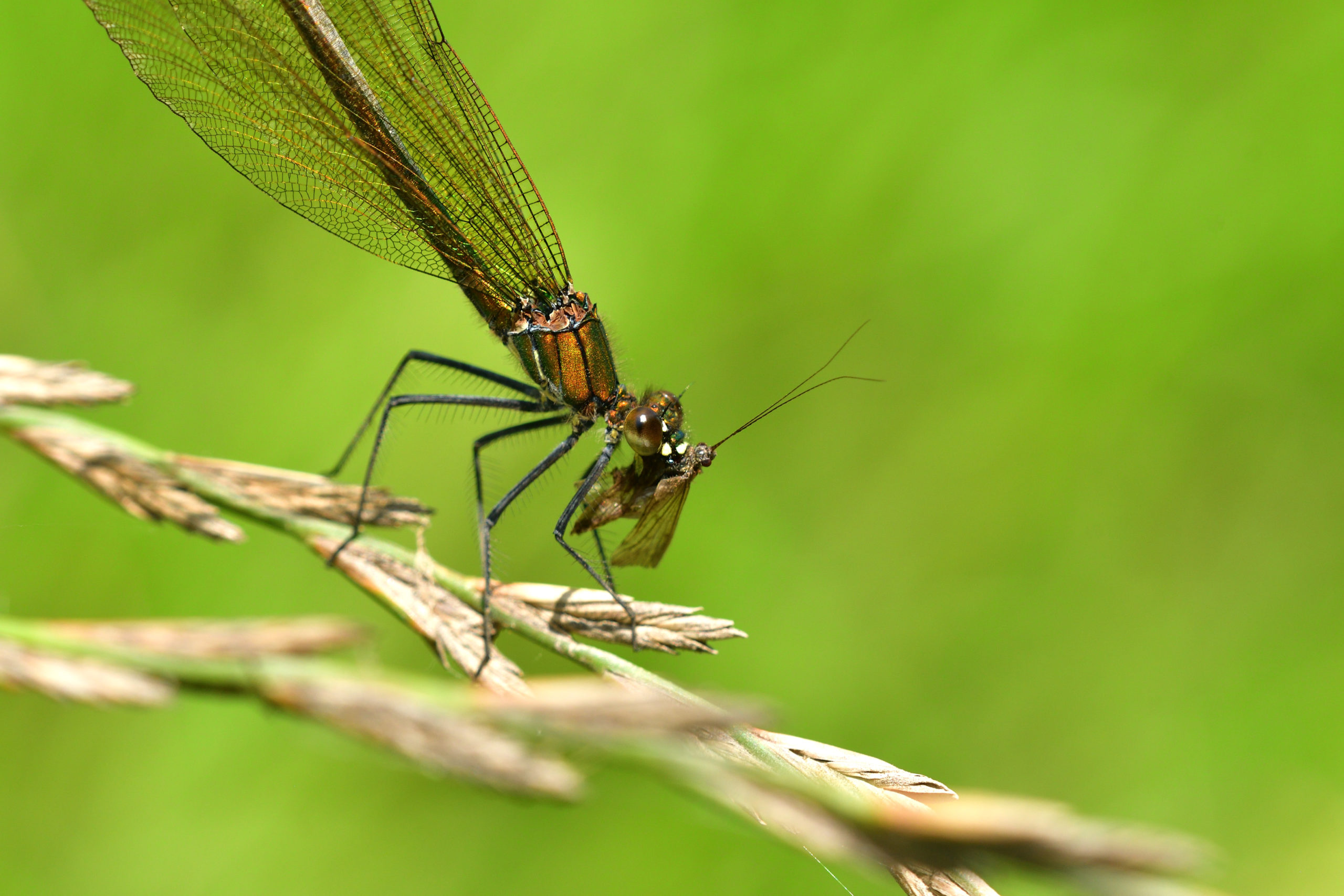
Dragonfly eating a smaller pest
Butterflies: Just from their diet alone, it’s no wonder why butterflies are considered to be very beneficial insects. They keep our flowers alive and thriving, eliminate aphids, and break down our decaying plants. In addition to this, they are also wonderful pollinators. Their fuzzy bodies pick up pollen from each flower, which means that they pollinate without meaning to, unlike a bee. They actually go beyond bees in pollination in some ways. Butterflies pollinate cotton and keep those crops growing strong, which bees can’t do. There’s honestly no downside to having butterflies nearby, except for the predators that may be lurking and waiting for their chance to feast on these wonderful insects.
Dragonflies: Dragonflies are also extremely beneficial, but in a much different way. They constantly devour our most despised little pests, which means less trouble for us. And since they don’t actively seek out humans as food, we don’t have to worry about being hunted down by these powerful fliers (most of the time). They don’t eat our plants or come down in swarms, so we don’t have to worry about those factors either. Dragonflies share the same sole downside to their presence: nearby predators who will focus in on the location of these speedy fliers and may not leave if the food is reliable.
Pest Control Can Pick Up Where They Leave Off
Pest control services in general don’t like to go near butterflies or dragonflies because of a few key reasons. They’re both very beneficial, harmless to people, and don’t swarm our homes and yards even in peak season. But the insects that they do enjoy are definitely pests that can pose a big problem if they are not eaten fast enough. Our pest control technicians are experts in the most effective and attentive ways to take care of smaller pests without harming the ecosystem of the backyard. Teamwork makes the dream work, and the hard work of the butterflies and dragonflies don’t go unnoticed by our attentive team.
Citations
All about butterflies. (n.d.). Cambridge Butterfly Conservatory. Retrieved May 13, 2022, from https://www.cambridgebutterfly.com/all-about-butterflies/
Buck, A. (2022, March 27). Dragonfly vs butterfly: What’s the difference?. AZ Animals. Available at https://a-z-animals.com/blog/dragonfly-vs-butterfly/ (Accessed on May 13, 2022).
Heimbuch, J. (2022, April 26). 8 things you never knew about dragonflies. Treehugger. Available at https://www.treehugger.com/things-you-never-knew-about-dragonflies-4864302 (Accessed on May 13, 2022).
Natale, M. (2022, March 14). 9 fascinating facts about butterflies. World Animal Protection. Available at https://www.worldanimalprotection.us/blogs/9-fascinating-facts-about-butterflies (Accessed on May 13, 2022).
Zielinski, S. (2011, October 5). 14 fun facts about dragonflies. Smithsonian Magazine. Available at https://www.smithsonianmag.com/science-nature/14-fun-facts-about-dragonflies-96882693/ (Accessed on May 13, 2022).
Request a Free Quote Today
(We do not share your data with anybody, and only use it for its intended purpose)


